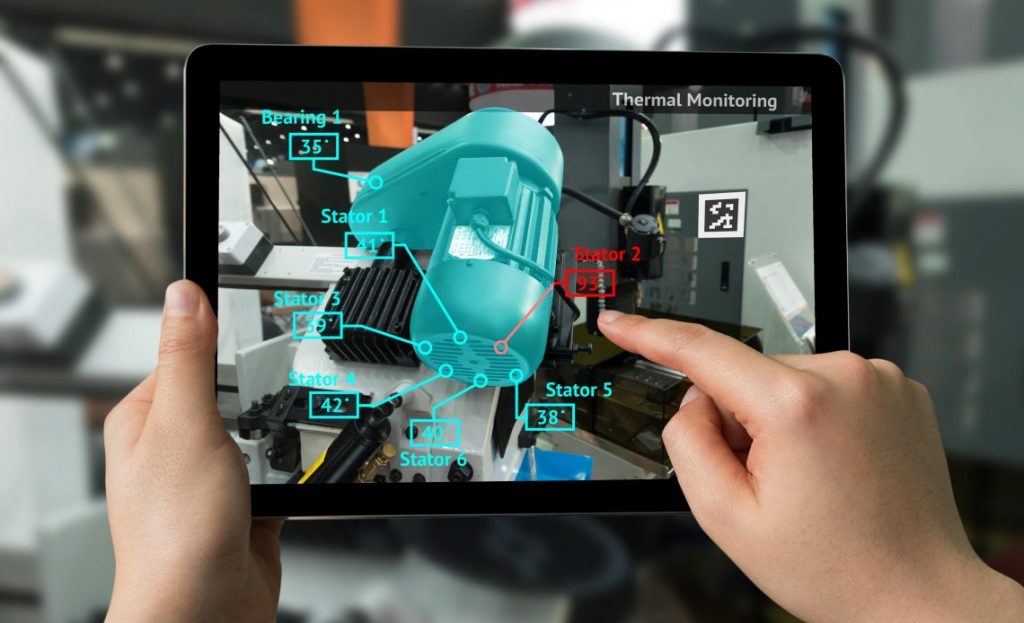Augmented Reality is the new platform for mass media – A big turn towards Revolution!
Description: Augmented reality is used to visually alter natural environments or to provide users with additional information. The primary advantage of AR is that it combines digital and three-dimensional (3D) components with a person’s perception of the real world. Augmented reality is transforming how frontline employees learn and interact digitally with their physical surroundings, resulting in faster execution, fewer manual processes, and better decision-making. Augmented reality (AR) is the process of superimposing digital elements on top of the real world. AR’s widespread adoption will be slow but inevitable because the technology is still in its early stages. Although high-end smartphones contain augmented reality elements, they lack the capability to fully utilise augmented reality. AR is the real-time overlay of visual, aural, and other sensory enhancements over a physical environment. Google SkyMap and Wikitude are two well-known AR apps. The e-commerce industry will benefit the most from AR because it allows static display boards to be improved. AR provides a better user experience than the current 2D experience because of its realistic 3D experience. Thousands of downloads of the Pokemon Go game are sufficient proof.

In essence, augmented reality (AR) involves superimposing digital features over the real world. The widespread adoption of AR is slow but inevitable. This is because the technology is still extremely new and will take some time for the general population to understand. As with any other tech device, the price decrease of AR devices will undoubtedly play a significant role in this. Although some high-end smartphones do include augmented reality elements, they lack the capacity to use augmented reality fully. The camera on your smartphone has been optimally utilized for augmented reality by Snapchat, Facebook, and Instagram. Due to Snapchat’s face filters, the selfie game was highly well-liked in 2015.
When items in the actual world are supplemented with computer-generated perceptual information, sometimes spanning many sensory modalities, such as visual, aural, haptic, somatosensory, and olfactory, this is referred to as augmented reality (AR). Due to businesses like Facebook, Apple, and Google, the AR platform has developed and been launched. They will naturally provide their out-of-the-box AR applications to them given their big user base. The ability to create effective and entertaining augmented reality (AR) apps and related features have been made possible by tools like Apple’s AR Kit, Snapchat’s Lens Studio, and Google’s ARCore. In addition to the existing virtual tape measures and photo-editing filters, there will be many more AR features in the future. It has particularly promising application prospects in neurosurgery.
Augmented reality is reshaping how frontline employees acquire knowledge and interact digitally with their physical surroundings, leading to faster execution, fewer manual processes, and better decision-making. It does this by improving information delivery, accelerating knowledge transfer, modernizing training methods, providing immediate access to remote expertise, and improving customer experiences. AR instructions may be simply published and seen on a variety of devices across the organization, including phones, tablets, RealWear, and HoloLens 2 headsets. Through the simple collection and documentation of professional best practices and the presentation of digital knowledge in a real-world context, augmented reality (AR) addresses workforce concerns. Industrial enterprises all across the world are already recognizing the benefits of a successful enterprise AR implementation.
The integration of interactive digital elements like vibrant visual overlays, buzzy haptic feedback, or other sensory projections into our physical environs is known as augmented reality. If you took part in the craze around Pokemon Go, you saw augmented reality in action. This (once-extremely popular) smartphone game allowed players to view the world around them through their smartphone cameras while projecting game objects, such as onscreen icons, score, and ever-elusive Pokemon creatures, as overlays that made them seem as though those items were right in your real-life neighbourhood. Millions of children and adults alike were sent wandering through their actual backyards in pursuit of virtual rewards because of the game’s immersive design.
Another well-known AR app is Google SkyMap. As you point the camera of your smartphone or tablet toward the stars, it overlays information about constellations, planets, and more. Using the camera on your smartphone, Wikitude is an app that seeks up details on a location or object you merely point at. Do you need assistance picturing fresh furnishings in your living room? 2D content might have made everyone utterly bored. With its realistic 3D experience, AR provides a better user experience than the present 2D experience. 750,000,00,000 downloads of the Pokemon Go game are proof enough. Another example of the widespread use of AR is the 1.6 million daily views of Snapchat’s selfie lenses. The E-commerce industry will use AR the most since it allows static display boards to be improved with engaging user experiences. Famous for its furnishings, Ikea recently unveiled an AR app. Users may use the app to see how their preferred virtual furniture would fit into their living rooms. That is merely one of many instances.
The fundamental concept behind augmented reality is the real-time overlay of visual, aural, and other sensory upgrades over a physical environment. Sounds quite easy. In addition, haven’t television networks been using graphics in that way for years? However, augmented reality is more sophisticated than any technology you have seen in television broadcasts, despite the fact that some recent TV effects, like RACEf/x and the first down line that is superimposed on live American football games, both developed by Sportvision, come near. However, these devices only show visuals from one perspective. Graphics tailored to each viewer’s perspective will be displayed via next-generation augmented reality systems.









